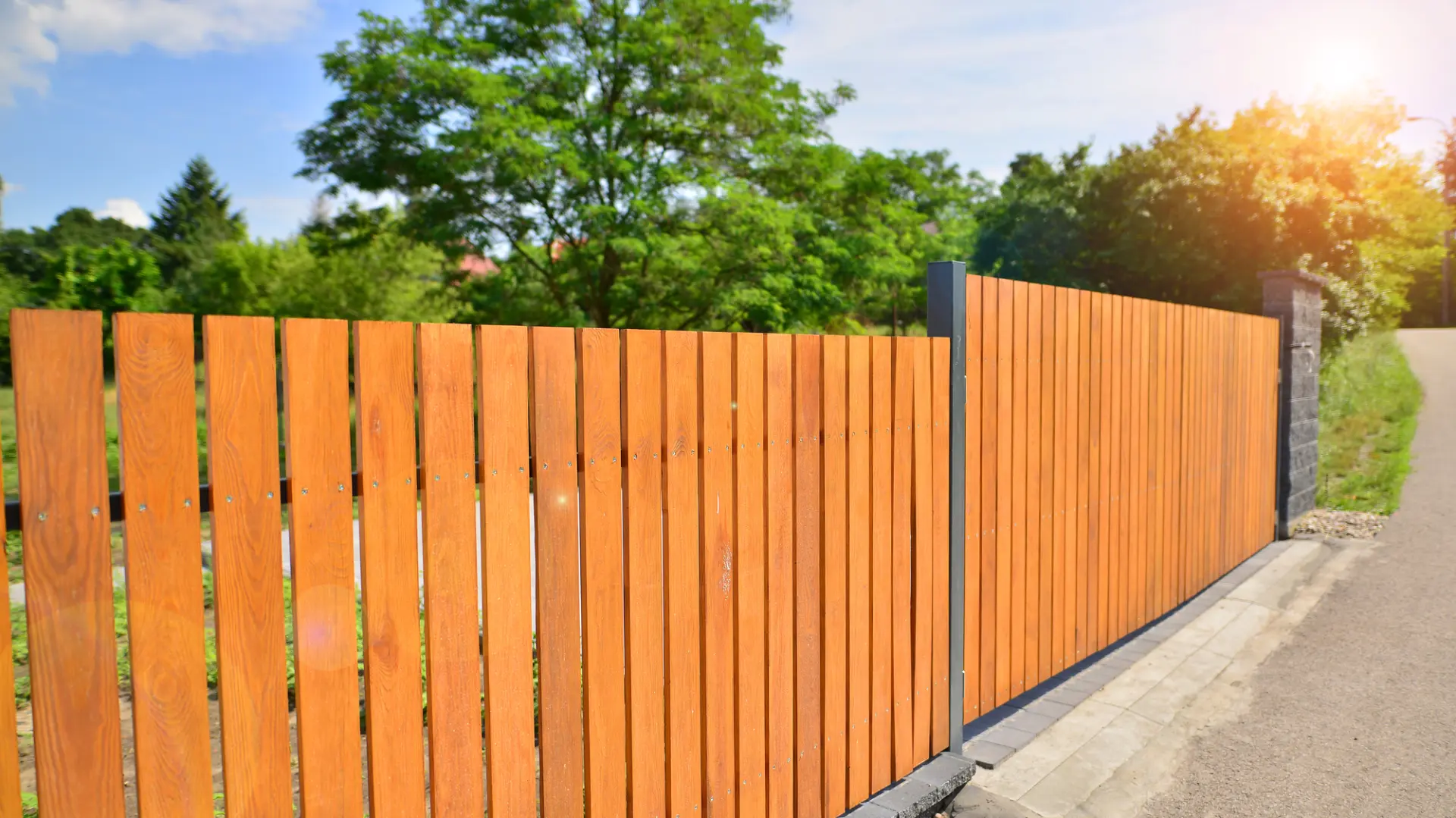
A wooden fence can bring warmth and character to any home in Clearwater, offering privacy and enhancing curb appeal. When selecting the correct type of wood for your fence, the choice often comes down to pressure-treated wood or natural wood. Both options have benefits and potential drawbacks, so understanding how they compare will help you decide which type of wood best suits your needs and budget.
What is Pressure-Treated Wood?
Pressure-treated wood is lumber treated with preservatives to resist decay, insects, and moisture. The wood is placed in a sealed chamber, where preservatives are forced deep into the fibers using high pressure. This process helps create a barrier against common problems like rot, termite damage, and fungal growth.
Pressure-treated wood is often used for fencing because of its durability and resistance to environmental stress. The treatment process allows the wood to withstand exposure to moisture and insects better than untreated wood, making it a popular choice in humid climates like Clearwater.
One downside of pressure-treated wood is its appearance. The treatment process can give the wood a green or brown tint, which may not be as visually appealing as natural wood. However, the color tends to fade over time, and pressure-treated wood can be stained or painted to improve its look.
What is Natural Wood?
Natural wood fencing refers to untreated lumber such as cedar, redwood, or pine. Each type of wood has its distinct grain pattern and color, giving natural wood fences a unique and organic appearance. Cedar and redwood are particularly popular because they naturally contain oils that help resist moisture and insects without chemical treatments.
A natural wood fence tends to have a more traditional and rustic look, which many homeowners prefer for aesthetic reasons. Unlike pressure-treated wood, natural wood doesn’t have a green or chemical-treated appearance, and it can be stained or sealed to enhance its natural beauty.
However, natural wood is more vulnerable to moisture, rot, and insects over time, especially if not properly sealed and maintained. Regular staining or sealing is necessary to protect natural wood from weathering and to maintain its color and structural integrity.
Durability and Maintenance
Pressure-treated wood has the edge when it comes to long-term durability. The chemical treatment process helps protect the wood from moisture and insect damage, which means pressure-treated fences tend to last longer with less maintenance. However, pressure-treated lumber is not immune to warping and splitting, particularly when exposed to fluctuating temperatures and humidity.
Natural wood, notably cedar and redwood, is naturally more resistant to decay and insects than untreated wood. However, it still requires regular maintenance. Staining or sealing natural wood every two to three years helps preserve its appearance and structural strength. Over time, natural wood can develop cracks and splits due to moisture absorption and drying cycles.
Pressure-treated wood can also leach chemicals into the soil, which may concern homeowners with gardens or pets. Natural wood doesn’t have this issue, making it a better option for those who prefer to avoid chemical exposure.
Cost Comparison
Cost is another factor that influences the choice between pressure-treated and natural wood. Pressure-treated wood tends to be more affordable than natural wood because it’s widely available and treated to last longer. The initial cost savings and reduced maintenance requirements make pressure-treated wood a cost-effective option for many homeowners.
Natural wood, especially cedar and redwood, tends to be more expensive due to its aesthetic appeal and natural resistance to pests and moisture. However, natural wood’s rich color and texture can offset the higher upfront cost.
When considering long-term costs, pressure-treated wood may require less maintenance, but natural wood’s timeless look and environmental benefits may justify the higher price for some homeowners.
Environmental Impact
For environmentally conscious homeowners, natural wood is often considered more eco-friendly. Sustainably harvested cedar and redwood are renewable resources, and the lack of chemical treatment means they can be recycled or composted at the end of their lifespan.
Pressure-treated wood contains chemicals that make it more resistant to decay but can leach into the soil over time. While newer treatments are less toxic than older methods, pressure-treated wood should be handled carefully when cutting and disposing.
Finding the Right Fit for Your Home
Choosing between pressure-treated and natural wood fencing depends on your appearance, maintenance, and cost preferences. Pressure-treated wood offers long-lasting durability with less maintenance, making it ideal for homeowners seeking a practical, budget-friendly solution. Natural wood, with its organic beauty and rich grain patterns, is perfect for those who value aesthetics and a more traditional look.
If you’re considering a wood fence for your property in Clearwater, A&D Quality Fencing can help you make the right choice. Their experienced team offers professional installation and repair services for pressure-treated and natural wood fences, ensuring a secure and attractive addition to your home.
Picture Credit: Depositphotos


